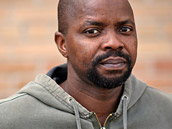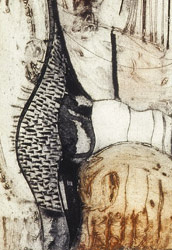Editorial
Writing and Photography
Amatoritsero Ede
I had it in mind to write a completely different editorial for this issue on a totally divergent subject. Two scenarios changed that one idea. First, a photo shoot with John Macdonald, veteran chronicler of the lives and times of Ottawa literati, towards – according to him – the promotion of my new poetry collection; second, the delightful shock of seeing a professional photographer at painstaking work. It opened my eyes to the similarity of craft between photography and writing; well, at least that kind of writing – literary fiction, poetry, the well-crafted creative non-fiction or the classic essay – which insists on mathematical exactitude.
Precision was what the professional photographer demanded. He drove around seeking that elusive balance of light and shade to aid his craft. For some time he perambulated, stopped, hesitated, changed his mind; then one final foray towards a completely different part of the city before he finally found a good spot where the mixture of air, light, shadow and space was perfect. One was struck by the truth of the anonymous truism that “finding the right syntax for a poem” is “like finding the right light before you take a photograph.” Therein lies the intersection between one art and the other.
Writing and photography have the image as units of composition. Just as much as the photographer needs a keen eye so does the writer rely on an acute sense of observation. This is especially true for writing that requires verisimilitude. Historical fiction, and novels relying on a heightened sense of place are good examples. Sometimes the writer also creates an imaginary place in novel after novel. Such places nevertheless become real in the fictional world they impinge upon and piece together. A good example is Thomas Hardy’s Wessex novels. In the sequelisation of fictional place the writer has to maintain a consistence with the original reality where characters are positioned and interact. A sharp deviation would unhinge that fictional world for the reader. In other instances it is the need to fictionally reproduce space which exists in the real world that sharpens the writer’s sense of observation as can be observed in Stephen Dedalus’ meandering through James Joyce’s Dublin.
The solidity of place, real or surreal, and its relationship to plot and characterisation, is also central to plays – as we can find in Walcott or Soyinka – or to dramatic poetry like Samuel Taylor Coleridge’s “The Rhyme of the Ancient Mariner and in T.S Elliot “Lovesong of J. Alfred Prufrock” or Afam “Akeh Letter Home.” Paeans to place such as my own “Globetrotter” especially require a heightened awareness of space and its relations to the quotidian.
The photographer’s need for capturing space in relation to his subject has to do with the need to tell the story of the subject or object and its background in a realistic manner. In this way the photographer functions like a writer and deals in realism. But it is realism stepped in the desire to record the subject or object as ‘objectively’ as possible while rendering it aesthetically. In other words his art moves beyond Oliver Cromwell’s injunction to the painter, Sir Peter Lely, in the absence of photography: “Paint me warts and all.” The photographer is interested in the marrying of realism with aesthetics mediated by spatial configurations with the object as the unifying element. He writes the story of the thing.
Significantly, the photographer and the writer’s narratives, as enabled by the observation of space and its relation to subject or object, can only be achieved with the aid of the image. That synaesthesia – sensory images – necessary for the writer’s art is equally indispensable to the photographer. The only difference is that the latter has as his eye the lenses of powerful cameras, while the former depends on words as mediated by his imagination. The photographer’s art is not thereby easier. He still has to judge, measure and observe distances, and – importantly – he has to filter the subject or object through his lenses on beams of light. Range and angle of shot require calculation, a calculation that might require speed and dexterity where, for example, the subject or object is immobile.
The writer depends on his five senses - of sight, touch, smell and so on – to recreate what the photographer captures within the millisecond of his aperture. Words are the writer’s aperture and lenses. The precision with which he can make words recreate the image in the reader’s mind corresponds to the success of his writing.
Both writer and photographer deploy the image to capture the essence of things and are involved in the narrativisation of place, histories and lives. Unifying both practices is their felicity to the aesthetic, the real and the surreal, and their story telling. For both, light is the unit of the aesthetic, and of narrativisation.



